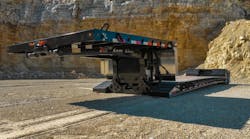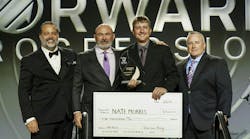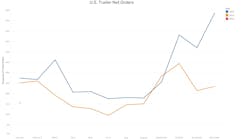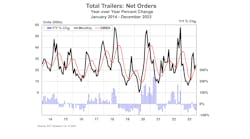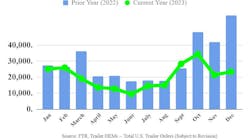Exel North America's Jeff Brown explained how manufacturers and dealers with paint-spray booths or other spray equipment can achieve compliance with the Environmental Protection Agency's new 6H paint rule and avoid fines.
Brown said that on January 9, 2008, the EPA accepted a new standard known as the HAPs 6H rule to reduce the public's health exposure to Hazardous Air Pollutants (HAPs). The agency's main objective was to significantly lessen the amount of HAPs released into the environment during paint stripping or surface coating operations.
During such work practices, the most dangerous chemicals, namely, methylene chloride (MeCl), cadmium, chromium, lead, manganese and nickel compounds, represent significant risk to employee health if proper engineering and administrative controls are not in place. Because the requirements are extensive, the EPA is allowing existing facilities until January 11 to reach compliance.
Overexposure to MeCl and heavy-metal compounds may include but is not limited to: chronic effects to the Central Nervous System (CNS), causing headaches, dizziness, nausea, and memory loss; decreased visual, auditory, and psychomotor functions; restricted mental development, emphysema, pulmonary edema, and cancer; and fatality when exposed to elevated concentrations.
The HAPs 6H EPA regulation has been broken down into several requirements in order to comply with the standard:
- Paint areas.
All painting, paint preparation, and paint stripping must be done in an enclosed paint booth or filtered prep station. This area must have a roof, three of the four sides enclosed, and have a filtered efficiency of at least 98%.
- Methylene Chloride (Mecl) usage.
Due to other current EPA rules on the use of MeCl, KPA has long established the recommendation that products containing MeCl not be used in facility operations. If MeCl products are in use, the following applies: if more than one ton of MeCl is used per year, management must develop and implement a written MeCl minimization plan; if less than one ton of MeCl is used per year, there is no written plan required, but MeCl alternatives must be considered (stripping agents that do not contain MeCl such as formic acid and benzyl alcohol; mechanical stripping; blasting with wet or dry media; thermal or cryogenic decomposition; and intense light).
- Spray gun requirements.
Spray guns must be High Volume, Low Pressure (HVLP), or electrostatic, air-assisted air less, or airless spray gun. Spray gun cleaning must be done in either an enclosed cleaning machine, by hand if spray guns are disassembled, or by flushing the gun with solvent without spraying (atomization).
- Training Requirements.
All employees conducting activities such as paint stripping and or miscellaneous surface coating operations must be properly trained and retrained. Trainings will consist of but are not limited to: surface preparation; spray gun set-up and operation, including high-transfer efficiency spraying techniques; routine spray booth and filter maintenance; and environmental compliance issues. Training can be administered through EXEL or an in house training program. All spray painters at new sources must complete training no later than 180 days after hiring. All spray painters at existing sources must complete training no later than 180 days after hiring, or by January 11, 2011, whichever is later. Initial painter training will be valid for a period of five years, and refresher training must be repeated at least once every five years.
- Record-keeping requirements.
Notifications are one time unless any of the previous information has changed. Notification should be sent to the EPA or state or local air pollution control agency. Records must be maintained for five years and must be kept on site for at least two years: painter training certification with training dates; documentation of filter efficiency; documentation from the spray-gun manufacturer proving the gun is an HVLP or otherwise permitted spray gun; copies of any notifications that were sent to the appropriate agency; annual usage of MeCl (if applicable); documentation of MeCl minimization policies (if applicable); and notification of 6H compliance will vary depending on whether a facility is new or existing. A new facility must submit their notification of compliance (or target date of compliance) no later than 180 days after their initial set-up. An existing facility must submit their initial notification of compliance by January 11.

